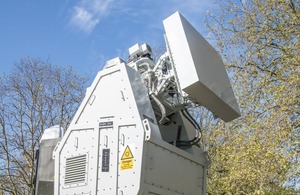The DTP investment was announced alongside the first nine Stephen Hawking Fellows, who will “continue Professor Stephen Hawking’s legacy” through research and STEM outreach, and funding to improve and boost uptake of science subjects at school.
DTPs are flexible investments in doctoral training at universities which support postgraduates to conduct research across the physical sciences, mathematical sciences and engineering.
The value of awards is based on the EPSRC research portfolio held by each university.
The council supports 11,000 doctoral students through DTPs, centres for doctoral training and industrial cooperative awards in science and technology (ICASE) studentships.
After completing PhDs, around 45% of engineering and physical sciences doctoral students go on to be employed in business or public sector, with 35% of those working in academia and 20% using this knowledge and skill in training or working in other sectors.
Previous investments in DTPs have resulted in advances from the research projects. For example, Joe Matthews, a postgraduate researcher funded through Newcastle University’s DTP has developed new methods to predict the location of road collision hotspots.
Business secretary Alok Sharma says “From Ada Lovelace to Stephen Hawking, our scientists and the discoveries they have made have pushed the boundaries, improving our healthcare and transforming the way we live, work and travel.”
Four doctoral mobility pilots have been announced to test approaches to attracting and supporting people from non-academic backgrounds to undertake doctoral study.
They aim to support social and career mobility by reducing barriers to entry to doctoral training from different groups and providing opportunities for lifelong learning.
The pilots will focus on cybersecurity and defence, along with data-science and engineering.
Education Secretary Gavin Williamson said: “Girls now make up just over half of A level entries for the three core science subjects but there is more we can do so we will fund research to better understand how we can improve girls’ physics A level participation.”
 Electronics Weekly Electronics Design & Components Tech News
Electronics Weekly Electronics Design & Components Tech News



